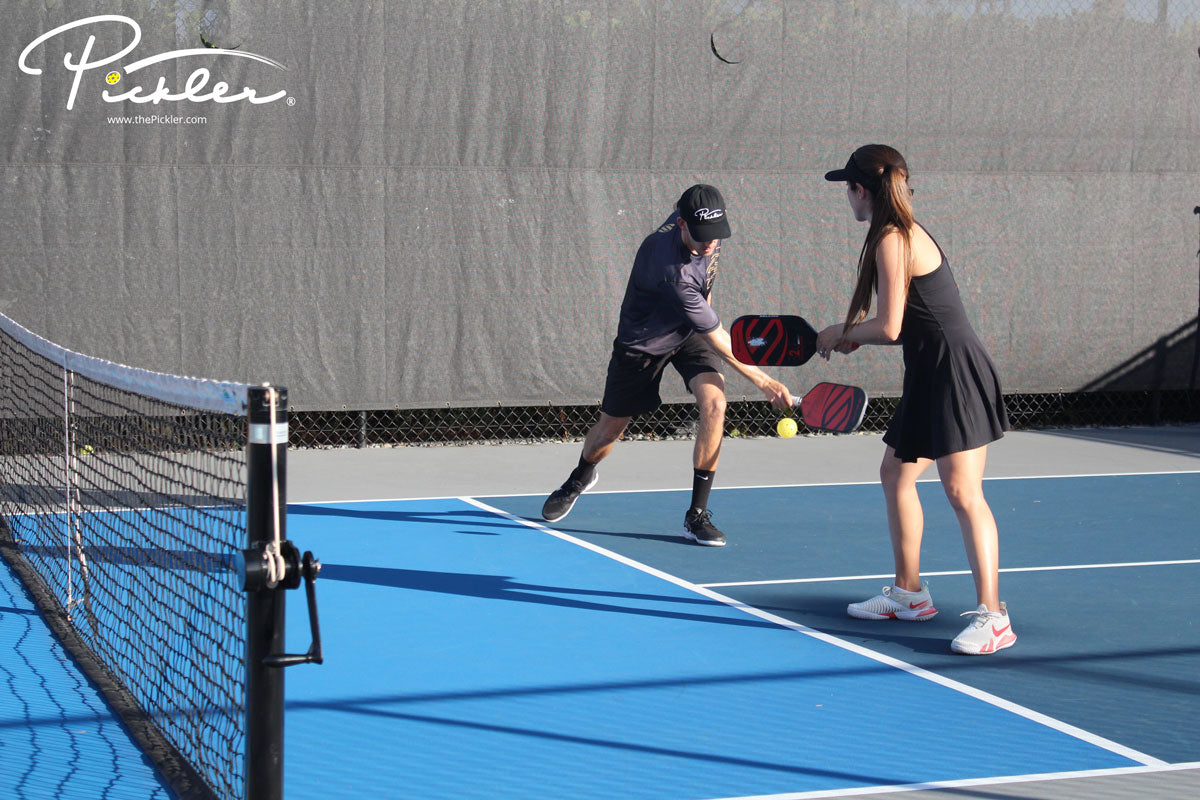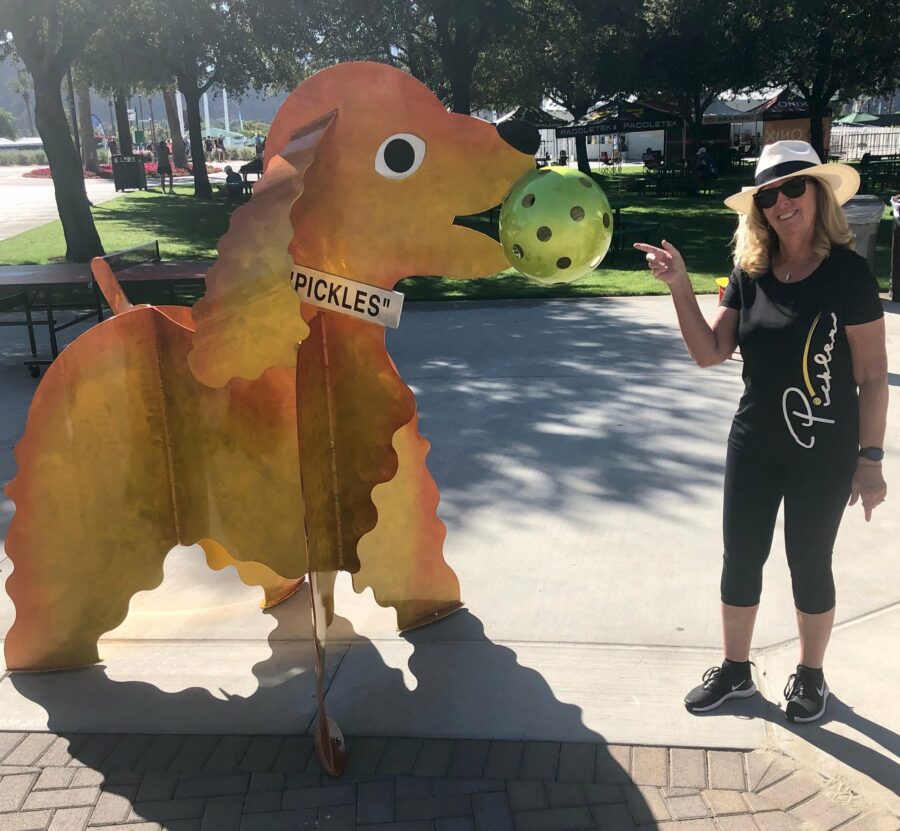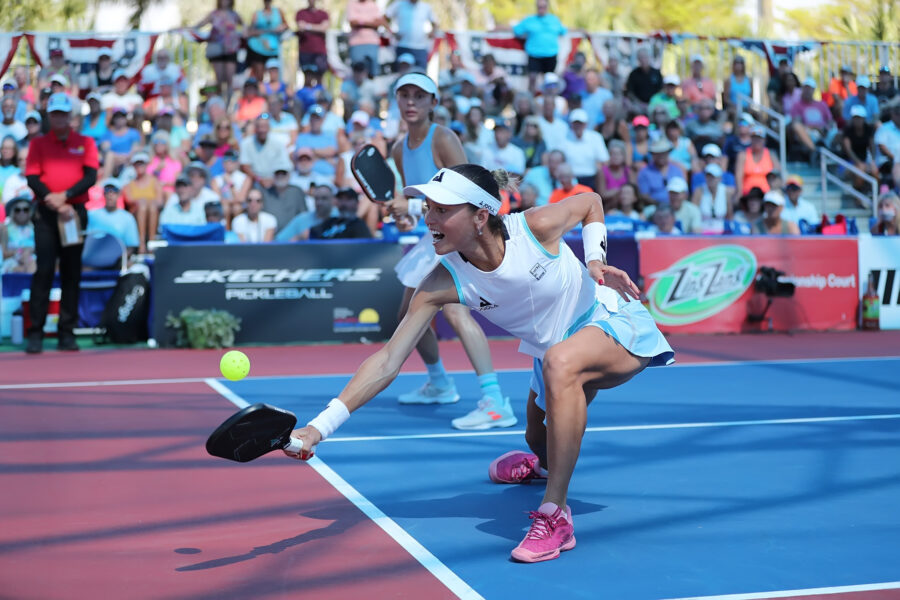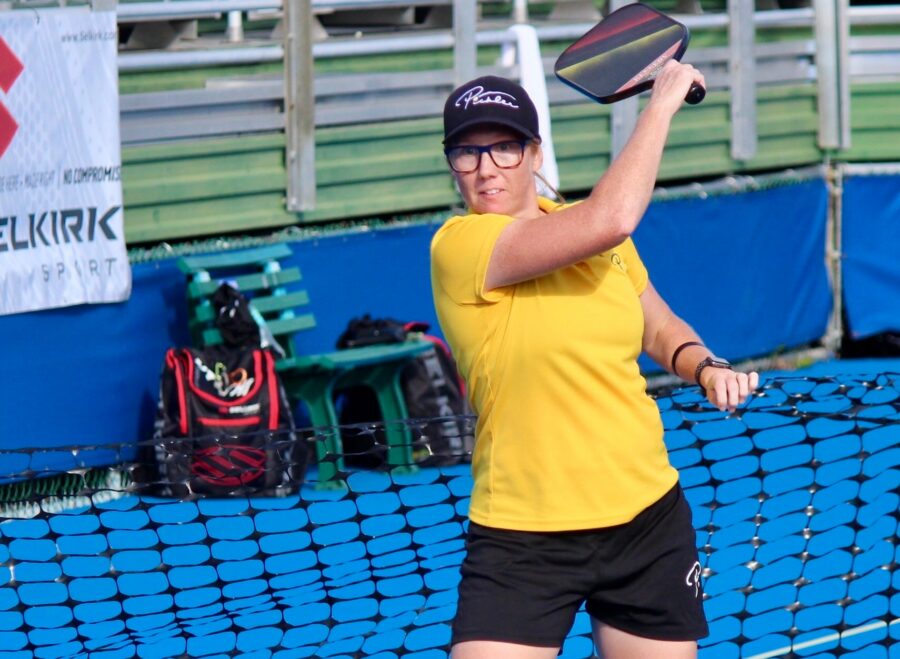The sport of pickleball has a range of skill levels, typically broken down by pickleball ratings from about 3.0 to 6.0+. The skills and strategies to be successful at each level generally differ. In other words, what works at the 3.0 level may not work at the professional levels. However, there are some pickleball strategies that transcend ratings.
One such pickleball strategy that works at every level is targeting your opponent’s non-dominant foot—especially in the transition zone (as noted by pickleball commentator Adam Stone during a recent live broadcast, because you have more space (compared to when your opponent is at the Kitchen line) and are better able to hit down at your opponent’s feet). Here’s why:
- Creates Discomfort & Forces Your Opponent to Hit Up: Hitting towards your opponent’s non-dominant foot—particularly, when your opponent is in the transition zone on the pickleball court—forces your opponent to hit an awkward shot that is low (forcing him or her to hit up on the pickleball) and close to his or her body (prohibiting your opponent from getting extended and making strong contact), which can create discomfort and make it more challenging for him or her to execute a strong shot in return. This can lead to weaker shots and more defensive responses.
- Challenges Footwork: Hitting to your opponent’s non-dominant foot—particularly, when your opponent is in the transition zone on the pickleball court—requires your opponent to perform more complex footwork, as he or she will have to quickly adjust his or her stance and recover his or her balance. This can lead to off-balance shots or slower reaction times, allowing you to maintain control of the point on the pickleball court.
- Neutralizes Dominant Shots: By hitting to the non-dominant foot of your opponent, you can neutralize your opponent’s stronger shots—which is usually on your opponent’s dominant side (in other words, forehand shots, as opposed to backhand shots). If your opponent has a dominant forehand, targeting his or her non-dominant side disrupts your opponent’s rhythm and forces him or her to rely on a weaker shot.
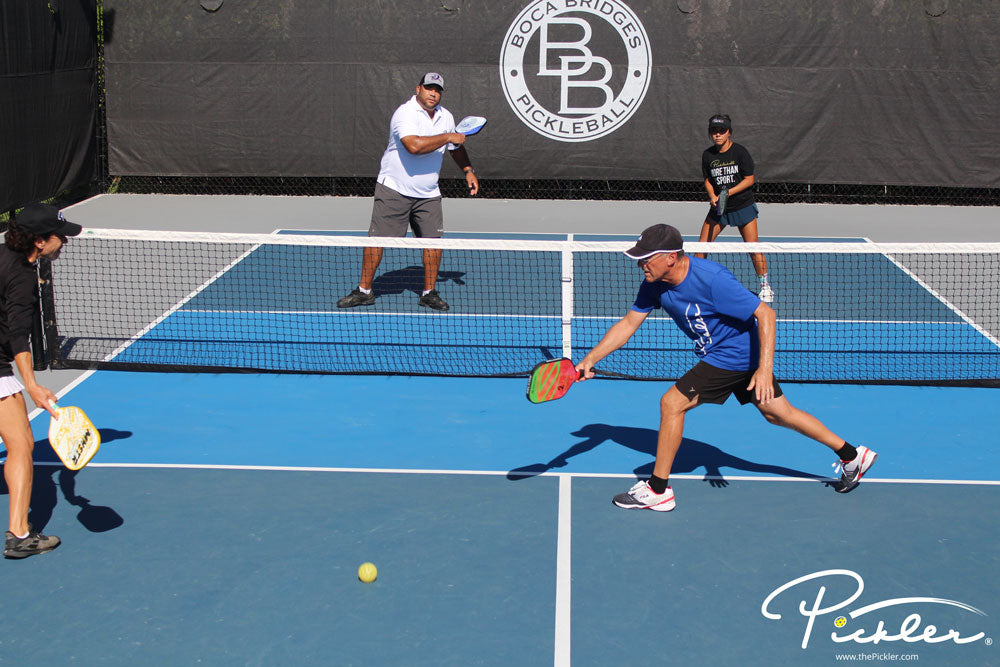
When your opponent is in the transition zone, look for ways to target that opponent’s non-dominant foot. This pickleball strategy will give you the edge no matter your skill level. However, as you rise in pickleball ratings, always expect the pickleball to come back. No matter how strong your strategy, advanced and skilled opponents will be able to counter the difficult shot, get the pickleball back over the net, and stay in the point. Stay strong and continue to apply pressure (i.e., maybe with another shot to your opponent’s non-dominant foot) until you eventually win the point on the pickleball court!

